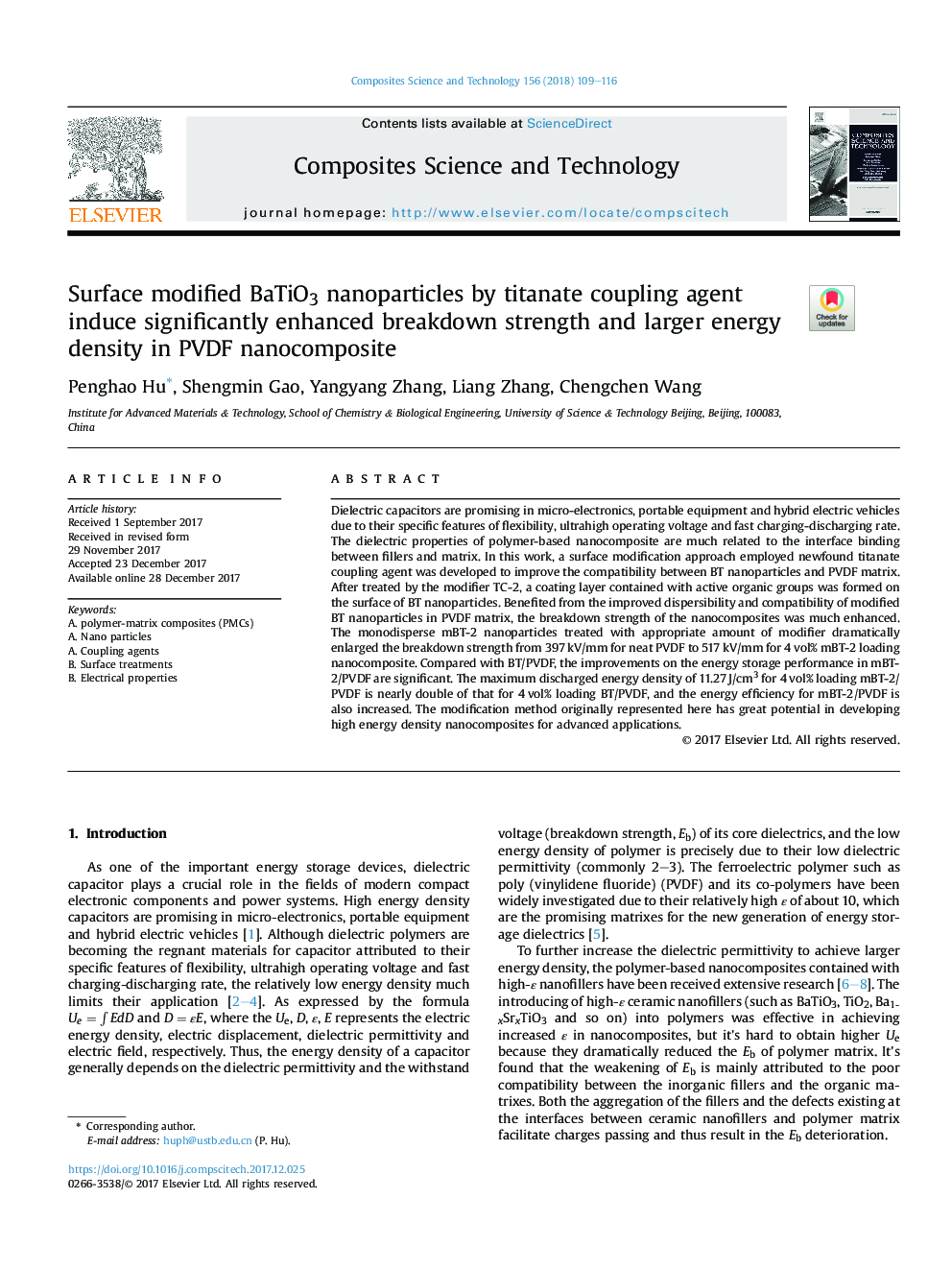| Article ID | Journal | Published Year | Pages | File Type |
|---|---|---|---|---|
| 7214722 | Composites Science and Technology | 2018 | 8 Pages |
Abstract
Dielectric capacitors are promising in micro-electronics, portable equipment and hybrid electric vehicles due to their specific features of flexibility, ultrahigh operating voltage and fast charging-discharging rate. The dielectric properties of polymer-based nanocomposite are much related to the interface binding between fillers and matrix. In this work, a surface modification approach employed newfound titanate coupling agent was developed to improve the compatibility between BT nanoparticles and PVDF matrix. After treated by the modifier TC-2, a coating layer contained with active organic groups was formed on the surface of BT nanoparticles. Benefited from the improved dispersibility and compatibility of modified BT nanoparticles in PVDF matrix, the breakdown strength of the nanocomposites was much enhanced. The monodisperse mBT-2 nanoparticles treated with appropriate amount of modifier dramatically enlarged the breakdown strength from 397â¯kV/mm for neat PVDF to 517â¯kV/mm for 4â¯vol% mBT-2 loading nanocomposite. Compared with BT/PVDF, the improvements on the energy storage performance in mBT-2/PVDF are significant. The maximum discharged energy density of 11.27â¯J/cm3 for 4â¯vol% loading mBT-2/PVDF is nearly double of that for 4â¯vol% loading BT/PVDF, and the energy efficiency for mBT-2/PVDF is also increased. The modification method originally represented here has great potential in developing high energy density nanocomposites for advanced applications.
Keywords
Related Topics
Physical Sciences and Engineering
Engineering
Engineering (General)
Authors
Penghao Hu, Shengmin Gao, Yangyang Zhang, Liang Zhang, Chengchen Wang,
